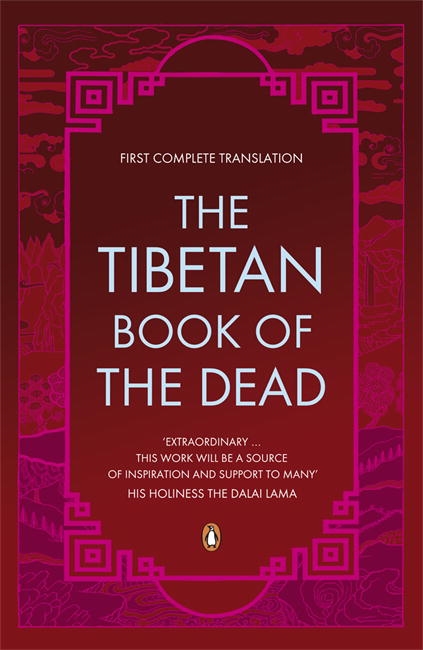So this here is a book by the former Queen of Bhutan! (Former because her awesome-ass husband, Jigme Singye Wangchuck, abdicated in favour of his son in 2006. Ashi Dorji Wangmo is his first wife; the current king is the eldest son of him and his third wife. All four of his wives are sisters. Confusing, much?)
Sadly, this book reads precisely like a book written by royalty: i.e. by a person who is not obliged to pay attention to how books are supposed to be written. Its content is pretty good, but its structure is all over the place. The inner flap praises it "a captivating blend of personal memoir, history, folklore and travelogue". I call it a mess.
I'm being cruel, of course. It's not a bad read: you get to learn a load about Bhutanese heritage, from its blue poppies and golden langurs to the 2003 Duar War, where the King himself led volunteer troops to rout the terrorist cells hidden in the nature reserves. And honestly, Queen Ashi sounds like a pretty cool person to hang out with: the kind of gung-ho middle-aged lady who's always hiking up dangerous mountain trails to donate shovels and carrot seeds and solar panels to remote villages, blisters and altitude sickness be damned.
What frustrates me is the gaps. She tells us about her idyllic childhood in Nobgang and her boarding school life at St Helen's Convent in Kalimpong, India; but then it's straight on to her joint wedding with her sisters to the King: nothing about their courtship, nothing about her emotions, nothing psychological or problematic about the institution of polygamy.
Sadly, this book reads precisely like a book written by royalty: i.e. by a person who is not obliged to pay attention to how books are supposed to be written. Its content is pretty good, but its structure is all over the place. The inner flap praises it "a captivating blend of personal memoir, history, folklore and travelogue". I call it a mess.
I'm being cruel, of course. It's not a bad read: you get to learn a load about Bhutanese heritage, from its blue poppies and golden langurs to the 2003 Duar War, where the King himself led volunteer troops to rout the terrorist cells hidden in the nature reserves. And honestly, Queen Ashi sounds like a pretty cool person to hang out with: the kind of gung-ho middle-aged lady who's always hiking up dangerous mountain trails to donate shovels and carrot seeds and solar panels to remote villages, blisters and altitude sickness be damned.
What frustrates me is the gaps. She tells us about her idyllic childhood in Nobgang and her boarding school life at St Helen's Convent in Kalimpong, India; but then it's straight on to her joint wedding with her sisters to the King: nothing about their courtship, nothing about her emotions, nothing psychological or problematic about the institution of polygamy.
And while she describes her wanderings, she mentions the challenges that Bhutan faces in its slow but measured stride towards modernisation - how thieves are breaking into the chortens and stealing their sacred jewels; how women are falling pregnant and going mad when abandoned by their Japanese tourist lovers; how the nation is becoming a population of jet-setters: young people going off to study in Oxford and old people going on pilgrimages in India or else seeking markets to sell their mountain raspberries and peaches.
And yet there is no sense of tension in her voice; she is absolutely convinced that everything will turn out okay; almost all the people she describes are happy, even if their families have been devastated by death and disease; the old woman with the goitre whom she volunteers to send to a a hospital insists that she wants to hold on to that lump of flesh that's been under her chin for fifty years, thank you very much.
Everyone's so content; everything's so effing ZEN. Or at least the eye of the author makes it so. And while I'm delighted to think that the concept of Gross National Happiness might actually be working; that there is an alternative route to peaceful development other than the Lee Kuan Yew model; I can't help but feel that this implacability is the antithesis of modern literature; that good writing is born out of crisis.
Ah well. Long and short of it is that Bhutan still sounds an awesome place to visit. Wonder if they have cute openly gay boys there. Ooh, Google says there are a few.
View Around the World in 80 Books!!! in a larger map
Representative quote: On the altar of my shrine room at home is a stone shaped like a chorten, given to me by an old lady in a village in Tongsa. She had found it in a riverbed and kept it on her own altar until the day I walked it into her home. Buffeted and sculpted by ice and snow, rocks and water, on its long journey down the Himalayas to a village in the heart of Bhutan, that stone is for me a symbol of the journeys I have made. An locked inside it, like treasures sealed in a chorten, are the seeds of journeys still to come - there are so many treasures of the Thunder Dragon that still wait to be discovered.
Next book: Lil Bahadur Chettri’s Mountains Painted with Turmeric, from Nepal.

